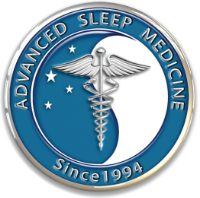Obstructive Sleep Apnea
Obstructive sleep apnea is a common and serious sleep disorder that causes you to stop breathing during sleep. The airway repeatedly becomes blocked, limiting the amount of air that reaches your lungs. When this happens, you may snore loudly or making choking noises as you try to breathe. Your brain and body becomes oxygen deprived and you may wake up. This may happen a few times a night, or in more severe cases, several hundred times a night.
In many cases, an apnea, or temporary pause in breathing, is caused by the tissue in the back of the throat collapsing. The muscles of the upper airway relax when you fall asleep. If you sleep on your back, gravity can cause the tongue to fall back. This narrows the airway, which reduces the amount of air that can reach your lungs. The narrowed airway causes snoring by making the tissue in back of the throat vibrate as you breathe.
Sleep apnea can make you wake up in the morning feeling tired or unrefreshed even though you have had a full night of sleep. During the day, you may feel fatigued, have difficulty concentrating or you may even unintentionally fall asleep. This is because your body is waking up numerous times throughout the night, even though you might not be conscious of each awakening.
The lack of oxygen your body receives can have negative long-term consequences for your health. This includes:
- High blood pressure
- Heart disease
- Stroke
- Pre-diabetes and diabetes
- Depression
There are many people with sleep apnea who have not been diagnosed or received treatment. A sleep medicine physician can diagnose obstructive sleep apnea using an in-lab sleep study or a home sleep test. Sleep apnea is manageable using Continuous Positive Airway Pressure (CPAP), the front-line treatment for sleep apnea, oral appliance therapy or surgery.
Obstructive sleep apnea in adults is considered a sleep-related breathing disorder. Causes and symptoms differ for Obstructive Sleep Apnea in Children, and Central Sleep Apnea.
Learn more about sleep apnea.
Type of sleep study that may be ordered: Polysomnography (PSG) in-center or in-home may be ordered to diagnose or rule out sleep apnea. A split night study may also be ordered to both diagnose and treat sleep apnea in the same night, if possible.


 Snoring is both a social and a medical problem, which affects approximately 45 percent of normal adults in the United States alone. It can be disruptive to family life, frequently forcing partners to sleep separately. Snorers tend to have poor quality sleep and thus are prone to reduced daytime alertness. In its most severe form, snoring can be an indicator of obstructive sleep apnea.
Snoring is both a social and a medical problem, which affects approximately 45 percent of normal adults in the United States alone. It can be disruptive to family life, frequently forcing partners to sleep separately. Snorers tend to have poor quality sleep and thus are prone to reduced daytime alertness. In its most severe form, snoring can be an indicator of obstructive sleep apnea. Sleep apnea
Sleep apnea The inability to fall asleep or stay asleep is called insomnia. Insomnia, in its chronic form, can last for weeks, months, or even years. It may be related to worry, anxiety, depression, medical/psychiatric problems, or substance abuse. Insomnia is a symptom and in order to treat it, physicians must find the cause. Most insomnia sufferers sleep better after the appropriate evaluation and treatment.
The inability to fall asleep or stay asleep is called insomnia. Insomnia, in its chronic form, can last for weeks, months, or even years. It may be related to worry, anxiety, depression, medical/psychiatric problems, or substance abuse. Insomnia is a symptom and in order to treat it, physicians must find the cause. Most insomnia sufferers sleep better after the appropriate evaluation and treatment. Parasomnia refers to a variety of disruptive sleep-related events that disrupt one's sleep and can lead to injury or disturbance of oneself or others in the bed or house. Parasomnias can often be effectively diagnosed and treated.
Parasomnia refers to a variety of disruptive sleep-related events that disrupt one's sleep and can lead to injury or disturbance of oneself or others in the bed or house. Parasomnias can often be effectively diagnosed and treated. Circadian Rhythm Disorders refer to a disruption, temporary or chronic, in a patient's sleep-wake cycle. Circadian rhythms are the body's 24-hour internal clock that govern feeling alert during the day and sleepy at night. People who suffer from these disorders are unable to properly time their sleeping periods because their body clock is not aligned with the time of day. These disorders can result in either insomnia or excessive sleepiness, difficulty functioning at work or school, and social impairment. Some common types of Circadian Rhythm Disorders include:
Circadian Rhythm Disorders refer to a disruption, temporary or chronic, in a patient's sleep-wake cycle. Circadian rhythms are the body's 24-hour internal clock that govern feeling alert during the day and sleepy at night. People who suffer from these disorders are unable to properly time their sleeping periods because their body clock is not aligned with the time of day. These disorders can result in either insomnia or excessive sleepiness, difficulty functioning at work or school, and social impairment. Some common types of Circadian Rhythm Disorders include:


